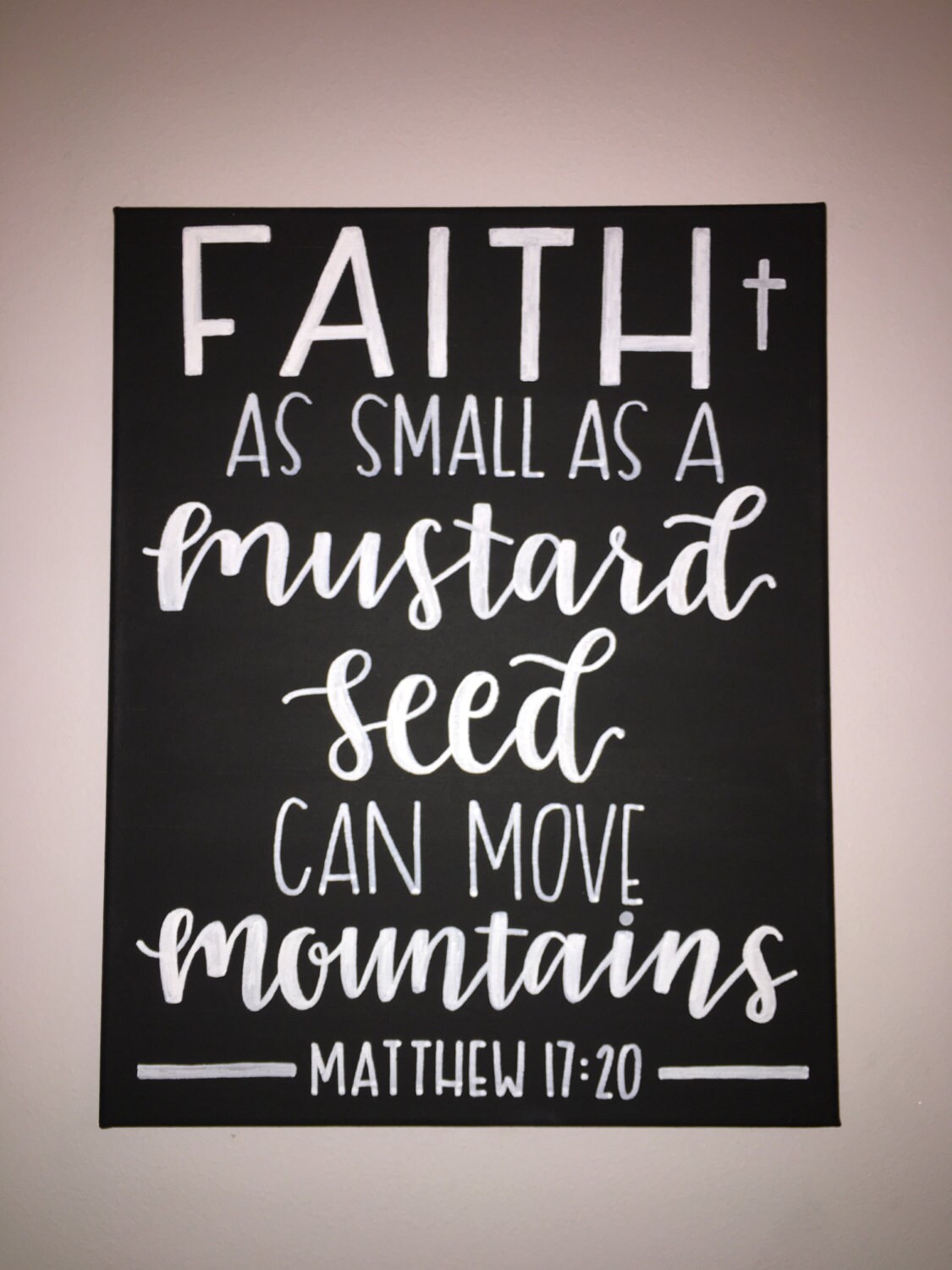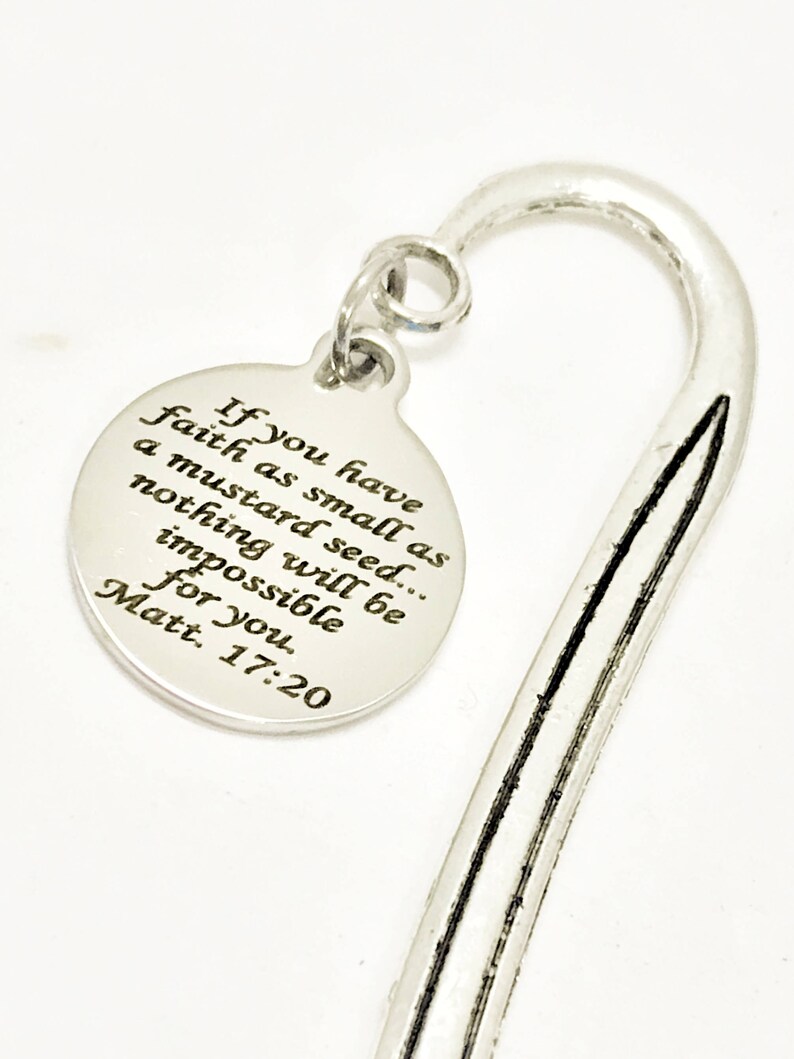

I see the mustard seed as being symbolic of faith in that our faith can be tested in the “dry times”, the most difficult of circumstances (drought, poor soil, and in clay or sandy ground). It can grow in hot, dry weather or cool, wet climates. The tree can grow in arid, dry climates and thrive even in clay or sandy soil.

Even though it’s one of the smallest seeds, the trees can grow up to 20 feet tall and 20 feet wide. Mustard trees have been found in various locations throughout the world. And even though Judaism and the Roman Empire rose up in defiance, His mostly working-class disciples helped initiate a movement that made Christianity the largest religion-a tree where all the birds of the air can find refuge and shelter.Ĭheck out the scene, “ The Kingdom of God as a Mustard Seed” from the “JESUS” film.Īll Scripture references quote the New International Version unless otherwise noted.What did Jesus mean when He said if you have faith as a mustard seed? Does this mean that we only need a small amount of faith? Can tiny amounts of faith really move mountains? What is the meaning of this saying of Jesus and the applications for our life? The Mustard Seed And despite being murdered to squash out His message, He conquered death and launched His church. It was going to start as the smallest seed and grow into something monumental. The kingdom wasn’t going to come in the way the Jews had always expected it. Then they gathered around him and asked him, “Lord, are you at this time going to restore the kingdom to Israel” (Acts 1:6)?Īs Matthew meditated on this passage, it makes sense that its small beginnings would be the part that stood out to him. Even after the resurrection, the disciples were still expecting Jesus to lead them to overthrow Rome and make Israel mighty again. They were looking forward to the reestablishment of a sovereign Israel that would never have to fear its enemies again. When first-century Jews looked forward to a Messiah, they had nationalistic expectations. The kingdom would eventually grow into a tree that could accommodate all the birds of the world, but it would start from this small, inconsequential seed. Though it is the smallest of all seeds, yet when it grows, it is the largest of garden plants and becomes a tree, so that the birds come and perch in its branches” (Matthew 13:31-32).įor Matthew, it was essential to emphasize the kingdom’s inauspicious beginnings. He told them another parable: “The kingdom of heaven is like a mustard seed, which a man took and planted in his field.


As an outsider who found shelter in its branches, it would make sense that the emphasis would be on the birds. The kingdom that Jesus established would grow large enough to extend beyond Jerusalem and make a place for everyone on earth. As a Gentile, this teaching is significant. It makes sense that Luke’s Gospel would zero in on this parable. Under it the wild animals found shelter, and the birds lived in its branches from it every creature was fed (Daniel 4:10-12, emphasis added). Its leaves were beautiful, its fruit abundant, and on it was food for all. The tree grew large and strong and its top touched the sky it was visible to the ends of the earth. These are the visions I saw while lying in bed: I looked, and there before me stood a tree in the middle of the land. This seed that Jesus is planting would eventually be a tree where birds of all kinds could find shelter. The comparison here between the mustard seed and the kingdom seems to focus on the outcome. It grew and became a tree, and the birds perched in its branches” (Luke 13:18-19).Īs was the case in a lot of Jesus’s parables, He was using metaphors to communicate facts about the kingdom of God– and they were often agricultural. Then Jesus asked, “What is the kingdom of God like? What shall I compare it to? It is like a mustard seed, which a man took and planted in his garden. Let’s take a look! The mustard seed in Luke’s Gospel Both Luke and Matthew document this teaching with slightly different emphasis. Jesus’s mustard seed parable is a good example. Sometimes little details offer a deeper understanding of something Jesus did or said, and also help us understand the perspectives of the writers themselves. One of the best things about having multiple Gospels is how it allows us to see events from the viewpoint of the different writers.


 0 kommentar(er)
0 kommentar(er)
